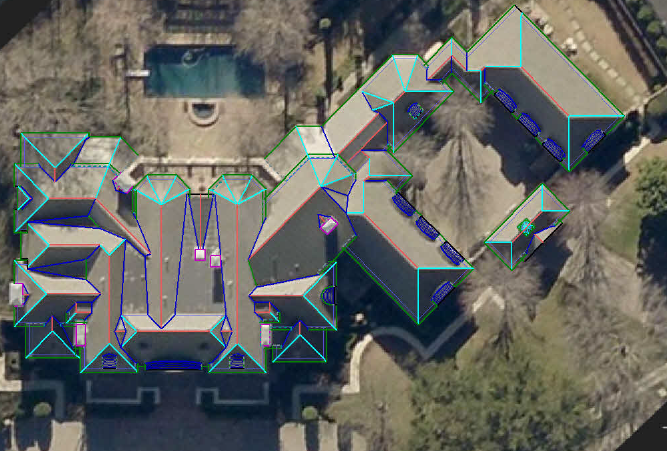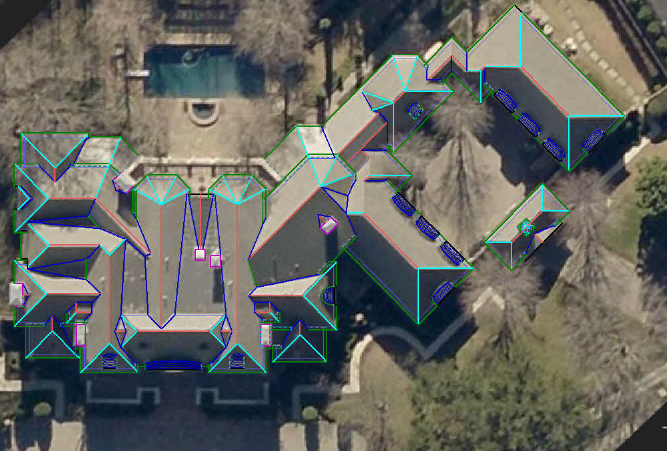In the fast-paced world of construction, efficiency and accuracy are key factors to ensuring the success of a project. For contractors, especially those involved in roofing, gathering accurate data before the project begins can make all the difference between a smooth process and a costly, time-consuming nightmare. This is where roof reports come into play. Roof reports, especially when generated through advanced technologies like satellite imagery, are indispensable tools for contractors across the USA.
But why exactly are roof reports so crucial? Why should contractors rely on them before breaking ground—or in this case, climbing ladders? This article delves deep into the reasons why roof reports are essential for contractors in the USA, discussing the various benefits, features, and uses of these reports.

What is a Roof Report?
A roof report is a detailed document that provides comprehensive information about a roof’s dimensions, structure, and condition. These reports are typically generated through a combination of satellite imagery, aerial photography, and ground-based inspections. Some companies, like Aerial Estimation, specialize in delivering highly accurate roof reports using satellite roof measurement tools, allowing contractors in the USA and Canada to access precise data on roof surfaces.
In essence, a roof report provides essential information on elements such as roof dimensions (length, width, area), pitch, ridges, valleys, slopes, and the condition of the materials. More advanced reports may also include details on drainage points, obstructions (like chimneys, skylights, or solar panels), and even the material of the roof (e.g., shingles, tiles, or metal).
Why Roof Reports are Crucial for Contractors
1. Accurate Measurements Save Time and Money
Before any roofing project begins, contractors need an accurate understanding of the size and complexity of the roof. Roof reports, generated using satellite roof measurement tools, provide the most accurate dimensions of a roof, which allows contractors to order the right amount of materials. This prevents the common problems of over-ordering or under-ordering materials, both of which can delay a project or eat into a contractor’s budget.
When contractors in the USA use roof reports to guide material purchases, they can reduce waste and ensure that the project moves forward without costly interruptions. Accurate measurements can save thousands of dollars over the course of a project and can prevent potential delays in material acquisition.
2. Improved Project Planning
Roof reports offer a detailed breakdown of a roof’s structure, which helps contractors plan their work more effectively. For example, knowing the exact pitch of a roof helps contractors understand whether they will need specialized equipment, scaffolding, or safety gear. The ridges, valleys, and slopes of a roof can indicate how challenging the installation will be and whether specific techniques or tools are required.
In many cases, roof reports also include satellite images that give contractors a clear visual of the roof’s layout. By studying these images, contractors in the USA can plan the flow of work, optimize manpower deployment, and even forecast how weather conditions might impact the timeline. This level of planning is especially important for roofing projects, where factors like wind, rain, and snow can significantly disrupt operations.
3. Faster Bidding and Estimation
For contractors, time is money, and being able to quickly produce accurate estimates is crucial for landing jobs. Roof reports speed up the estimation process by providing a complete view of the roof. By knowing the exact square footage, pitch, and other details of the roof, contractors can quickly calculate material and labor costs.
In addition, these reports help contractors produce more competitive bids. When contractors have all the necessary data upfront, they can offer more precise quotes to clients, giving them an edge over competitors who may need to revisit the site multiple times to gather information. In many cases, a roof report allows contractors to provide an accurate quote without even visiting the job site, saving them valuable time and resources.
4. Minimized Risk of Rework
Mistakes in measurement or poor project planning can lead to costly rework, which eats into a contractor’s profit margins and damages their reputation. Roof reports reduce the risk of errors by providing contractors with the exact measurements and details they need to get the job done right the first time.
By using satellite-based roof reports, contractors can avoid surprises during the construction phase, such as discovering that the roof is more complex than they initially thought. Accurate reports ensure that contractors are fully prepared before they start the project, reducing the likelihood of having to halt work to recalculate measurements, order more materials, or change the installation plan.
5. Enhanced Safety for Workers
Roofing is one of the most dangerous professions in construction. Slippery surfaces, steep slopes, and unpredictable weather conditions make it essential for contractors to prioritize safety. Roof reports help contractors plan for worker safety by providing information about the roof’s pitch, height, and potential hazards.
For example, a roof report might indicate areas that require additional safety measures, such as harnesses or guardrails. The reports can also help contractors in the USA prepare for specific challenges, such as difficult access points or unusual roof angles, which could present safety risks if not anticipated.
6. Precise Material Calculation
When contractors have access to a detailed roof report, they can precisely calculate the amount of materials needed for the project. This includes not only the main roofing materials, such as shingles, tiles, or metal panels, but also secondary materials like underlayment, flashing, sealants, and fasteners.
Using the data from roof reports, contractors can ensure that they are purchasing the right amount of each material, reducing waste and preventing costly last-minute material shortages. This precise material calculation is particularly important for large-scale projects, where even small miscalculations can lead to significant delays and added expenses.
7. Compliance with Building Codes
Roofing contractors in the USA must comply with various building codes and regulations. These codes are in place to ensure that roofs are safe, durable, and weather-resistant. Roof reports can include information about local building codes, helping contractors ensure that their work meets all legal requirements.
Additionally, roof reports may highlight any specific areas of the roof that require special attention due to local regulations, such as drainage systems or fire safety measures. By having this information at the beginning of the project, contractors can avoid costly penalties or the need for rework to bring the roof into compliance.
8. Better Communication with Clients
Clients often have limited knowledge about the intricacies of roofing projects, which can lead to misunderstandings about project timelines, costs, and materials. Roof reports can serve as a valuable communication tool between contractors and their clients.
When a contractor provides a roof report to a client, it helps clarify the scope of the project. The client can see the exact measurements, roof pitch, and any potential challenges, which makes it easier for them to understand why certain materials or techniques are necessary. This transparency helps build trust between the contractor and the client, reducing the likelihood of disputes or disagreements during the project.
9. Facilitates Insurance Claims
Many roofing projects in the USA are initiated due to damage caused by storms, hail, or other weather events. In these cases, contractors often work with clients who need to file insurance claims to cover the cost of the repairs. Roof reports can be a valuable resource during the insurance claims process.
A roof report provides a detailed assessment of the roof’s condition, including any damage caused by weather or wear and tear. This information can be used to support the client’s insurance claim, helping them secure the funds needed to complete the project. Contractors who provide roof reports can also use the data to ensure that their repair work aligns with the insurance company’s requirements.
Conclusion
Roof reports are indispensable tools for contractors in the USA who want to ensure the success of their roofing projects. From accurate measurements and improved planning to enhanced safety and better client communication, the benefits of using roof reports before starting a project are clear. In today’s competitive market, contractors who rely on satellite-based roof measurement tools and comprehensive reports can streamline their operations, reduce costs, and deliver high-quality results that meet or exceed client expectations.
For contractors, the investment in roof reports is not just about convenience—it’s about precision, safety, and ultimately, profitability. As the construction industry continues to embrace technological advancements, the role of roof reports will only become more critical in helping contractors navigate the complexities of roofing projects in the USA. Whether you’re bidding on a new project, planning for materials, or ensuring compliance with building codes, roof reports provide the data you need to make informed decisions and succeed in your roofing endeavors.


